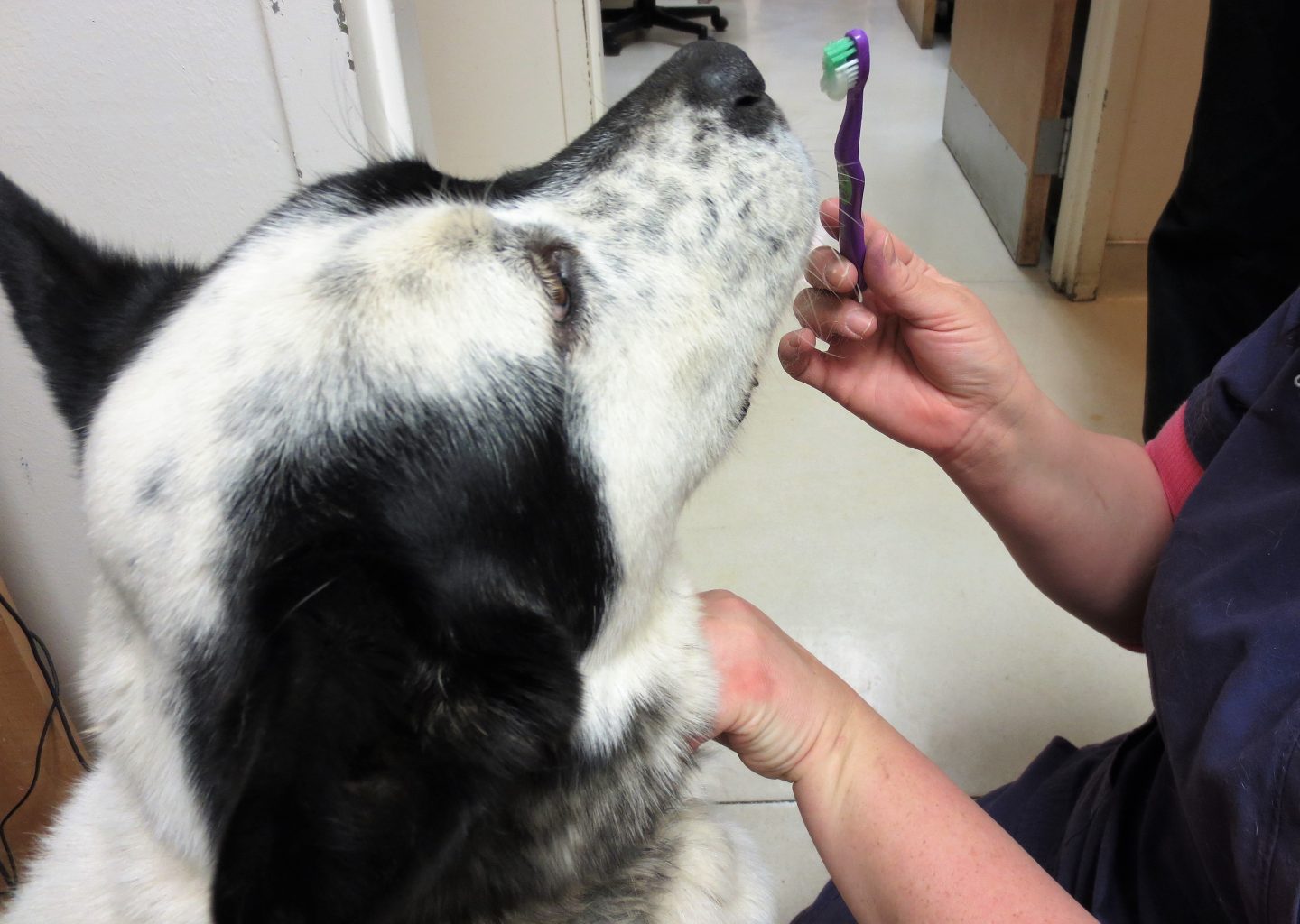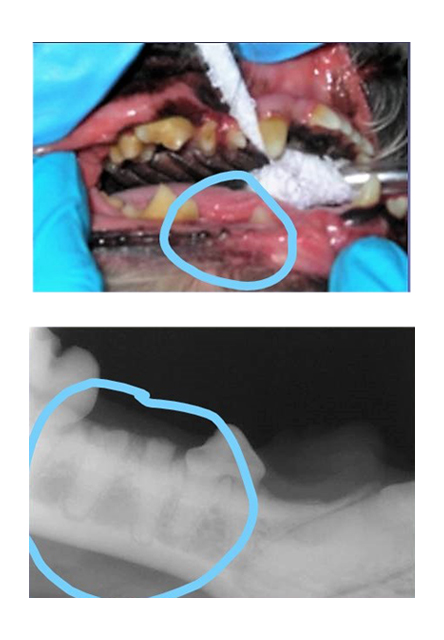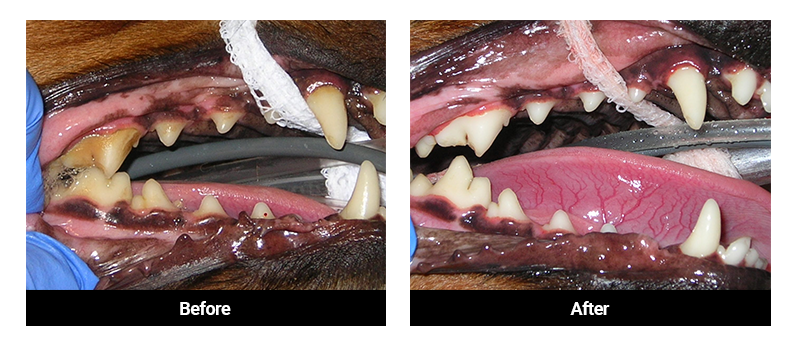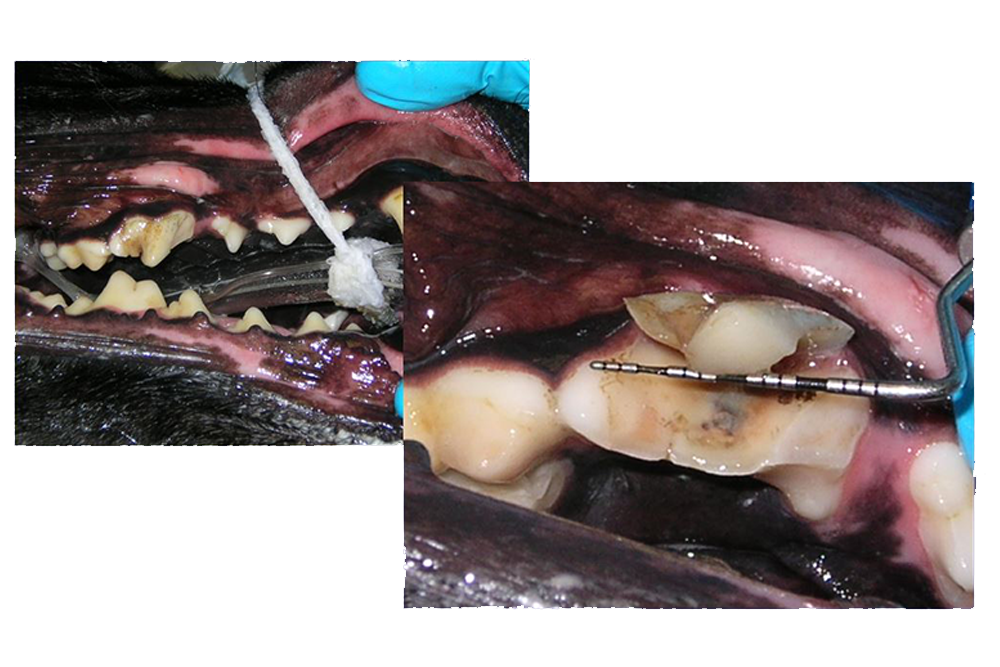Justin Starnes, DVM
Your veterinarian has recommended that your dog or cat needs a dental procedure, but why? Well, why do you go to your dentist every 6 months?
The truth is all mammals, including our pets, suffer from dental disease. Compared to humans who have 32 permanent teeth in our mouths, dogs have 42 and cats have 30. But, just as plaque and tartar can build up on our teeth causing gingivitis, the same occurs in our pets’ mouths.
We recommend at-home dental care including brushing your pets’ teeth with a special pet-friendly toothpaste and using medicated dental chews, mouth rinses, and water additives that all help slow down the progression of dental disease. While brushing/flossing/rinsing our teeth is incredibly important, it is not a substitution for going to our dentist. And at-home dental care isn’t a substitution for our pets either!
This is one reason why we recommend annual dental procedures for your pets.
We also know that our pets like to chew on things they’re not supposed to (bones, sticks, antlers, hard toys, etc.) which increases the chances of bruised and broken teeth. We know that these teeth are painful even if it may not seem obvious at first; most dogs will continue to eat and play. This likely stems from their evolutionary instincts in which wild canines with dental disease and/or tooth fractures must continue to eat…or get eaten! But if we have tooth pain, we run as fast as we can to the dentist (we’re babies). By getting regular dental exams and procedures we can catch these painful problems sooner.

Brushing teeth can be simple with a little training (pet and human). Most pets come to enjoy the experience!
But our dogs and cats do not sit in the chair, open their mouths, and say “aaahhh!” So anesthesia is required for us to perform a thorough oral exam and cleaning which includes:
- Probing every tooth for fractures, bone loss, and gingival pockets
- X-rays of every single tooth
- Ultrasonic scaling to remove calculus (mineralized plaque and tartar) from the surface of the tooth and under the gum line
- Polish to remove microscopic scratches
- Fluoride or Sanos (a dental sealant)
- And any required treatments before waking them up
Why do we perform radiographs during every dental procedure?
Human dentists x-ray our mouths at least once a year because they know that a large percentage of our teeth (the roots) are hidden from view beneath the gum line. The same applies to our dogs and cats. It’s known that the majority of dental disease is found in this subgingival area and often isn’t realized until we take x-rays. A tooth could look completely normal superficially, but radiographs may reveal a large tooth root abscess or significant bone loss, requiring surgical extraction.

Top – That tooth appears to be missing. Bottom – Nope! With x-rays we can see that the tooth is broken but the roots remain and need to be removed.
Our goal is to never have to surgically remove teeth. Ever heard of the expression, “It’s like pulling teeth?” (note: we are not actually “pulling teeth” but instead are surgically extracting them using a high speed burr to remove bone and section multi-rooted teeth before elevating them out with special instruments!) – it’s because teeth don’t like to come out if they don’t have to! But if we are seeing enough disease present in the mouth to require surgical extraction, the dog/cat will be SO much more comfortable for it. Dental disease progresses slowly, causing chronic pain and discomfort. When we go in and remove this disease in one fell swoop, we typically see increases in appetite, energy, and playfulness, and sometimes even decreases in unwanted behaviors such as aggression.
So in a nutshell, THAT’S why your veterinarian is recommending annual dental procedures with the goal that, if we can stay on top of our pets’ oral health, treatments such as surgical extractions are less likely allowing us to keep more teeth in their mouths and more money in your bank account! For more information on these procedures call us at 303-841-8833 or visit our Dental Services page.







